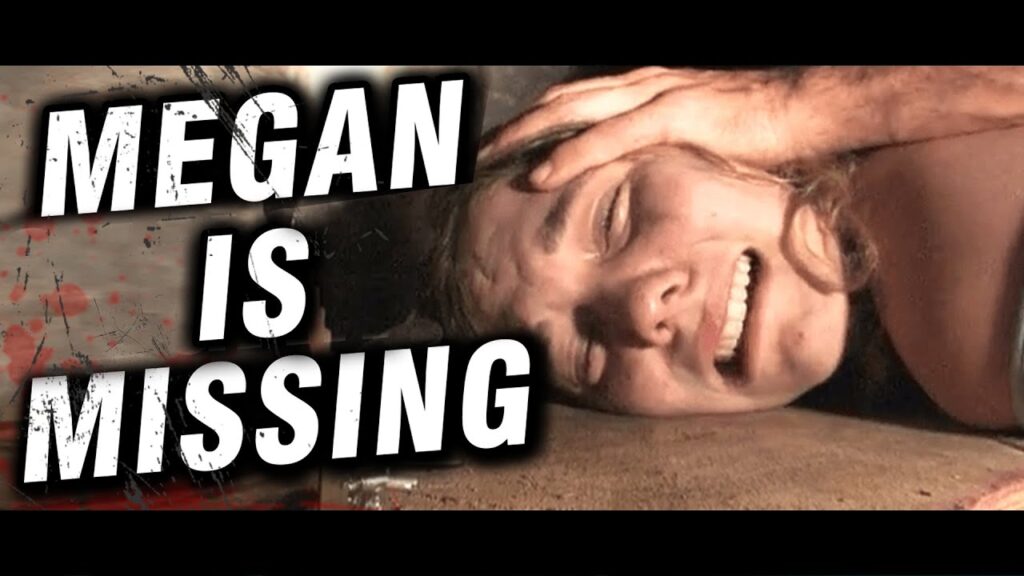Is "Megan Is Missing" Based On A True Story? What You Need To Know
Is "Megan Is Missing" a chilling portrayal of reality, or is it a carefully crafted illusion designed to shock and disturb? While the film draws inspiration from real-life events, the core narrative of "Megan Is Missing" is a work of fiction, designed to be a cautionary tale rather than a documentary.
The digital age has irrevocably altered the landscape of human interaction, particularly for young people. With the proliferation of social media and online platforms, teenagers are exposed to a world of unprecedented opportunities and dangers. "Megan Is Missing," a found-footage psychological horror film released in 2011, taps into this reality, exploring the perils of online grooming and abduction. Directed by Michael Goi, the film adopts a raw and unflinching approach, utilizing video chats, webcam footage, and home videos to create a sense of unsettling realism.
The film centers around Megan Stewart and Amy, two teenage girls from Los Angeles, California, who become entangled with an online predator. Through online interactions, the girls are lured into a dangerous situation, ultimately leading to their disappearance. The film's found-footage style heightens the sense of vulnerability and immediacy, blurring the lines between fiction and reality. The director's intention was to create a visceral experience, reflecting the dangers of the online world and the potential for exploitation that exists within it. While the film's graphic content and depiction of violence have drawn controversy, its creators maintain that the aim was to raise awareness about the very real threats facing young people today. The film was assembled from video chats, webcam footage, home videos and news reports, giving it the feel of a true story, while the reality is quite different.
The story itself is not a direct adaptation of any single true crime case. The film, however, takes inspiration from various real-life cases of abducted teenagers. The characters of Megan and Amy are fictional, but their experiences mirror the real events in which young girls are groomed and abducted by predators they meet online. The films unsettling power lies in its ability to tap into the anxieties surrounding online safety and the vulnerability of young people in the digital age. Despite this, the film does not depict a real kidnapping and murder.
The film's release was met with a mixed reception. Some viewers found it to be a powerful and necessary depiction of the dangers of online predation, while others criticized its graphic content and exploitation of violence. Regardless of the varying opinions, "Megan Is Missing" sparked conversations about online safety, child exploitation, and the responsibility of parents, educators, and authorities in protecting vulnerable individuals. The film's graphic nature, particularly in the final 30 minutes, is difficult to watch, and some viewers may find it deeply disturbing. As @peachyspencer noted on November 16, 2020, "So if you get triggered easily, I dont recommend watching it."
The "found footage" style of the film contributes significantly to its impact, making it feel as if the events are unfolding in real-time. The use of this technique is not unique to "Megan Is Missing"; it is a style often used in horror films to create a sense of realism and immediacy. The shaky camera work, amateurish video quality, and lack of a traditional narrative structure all contribute to the illusion that the viewer is witnessing genuine events. The use of found footage also heightens the sense of vulnerability and helplessness, as the characters are often shown capturing their own exploitation.
The film's success in generating discussion and debate underscores its cultural significance. Although not based on a singular true event, "Megan Is Missing" draws from a collection of real-world occurrences, resulting in a horrifying narrative. The experiences mirrored by the characters, Megan and Amy, are based on the grooming and abduction of young girls by online predators. The film serves as a stark reminder of the potential dangers that exist in the digital realm, encouraging audiences to approach online interactions with greater caution.
Many aspects of the film are fictional. The last 22 minutes of the movie are not based on real footage, and the footage is fictional. The film's impact stems from its ability to reflect the anxieties and fears surrounding online safety. However, it is crucial to distinguish between the fictional narrative of "Megan Is Missing" and the very real dangers it attempts to portray. While it may not be a true story in the traditional sense, its exploration of the complexities and dangers of the online world provides an important and cautionary tale.
In conclusion, the film is an American psychological horror film, released on May 3, 2011. The film's promotional materials highlight its use of video chats, webcam footage, home videos, and news reports to create a sense of realism. However, it is essential to remember that "Megan Is Missing" is ultimately a work of fiction, and viewers should not mistake its narrative for a factual account. Despite its origins in real-life issues, the story of "Megan Is Missing" is a creation of the filmmakers.
| Category | Details |
|---|---|
| Film Title | Megan Is Missing |
| Director | Michael Goi |
| Release Date | May 3, 2011 |
| Genre | Psychological Horror, Found Footage |
| Setting | Los Angeles, California (fictional) |
| Themes | Online Grooming, Child Abduction, Internet Safety |
| Style | Found Footage |
| Inspiration | Real-life cases of online grooming and abduction |
| Fictional Aspects | Characters, specific events, and final 22 minutes of the film |
| Controversy | Graphic content, portrayal of violence, and exploitation |
| Objective | To draw attention to the dangers of the internet |
While the film uses found footage to appear realistic, it is not a true story. The gritty portrayal, as well as the films disturbing narrative, is based on several real-life events. "Megan is missing" is not based on a single true story, but the film's creators state that the characters' experiences mirror real events where young girls were groomed and abducted by predators they met online. The film's characters, Megan and Amy, are fictional.
The impact of Megan Is Missing is undeniable, but it is crucial to remember its true nature. Although it taps into the very real dangers of the digital age, the film itself is a work of fiction, designed to disturb and provoke thought, not to document a true event. The movies power lies in its ability to reflect the anxieties and fears surrounding online safety and the vulnerability of young people in the digital age. The film may be a frightening watch, but its lasting impact shows how the dangers of the internet can be brought to life.


